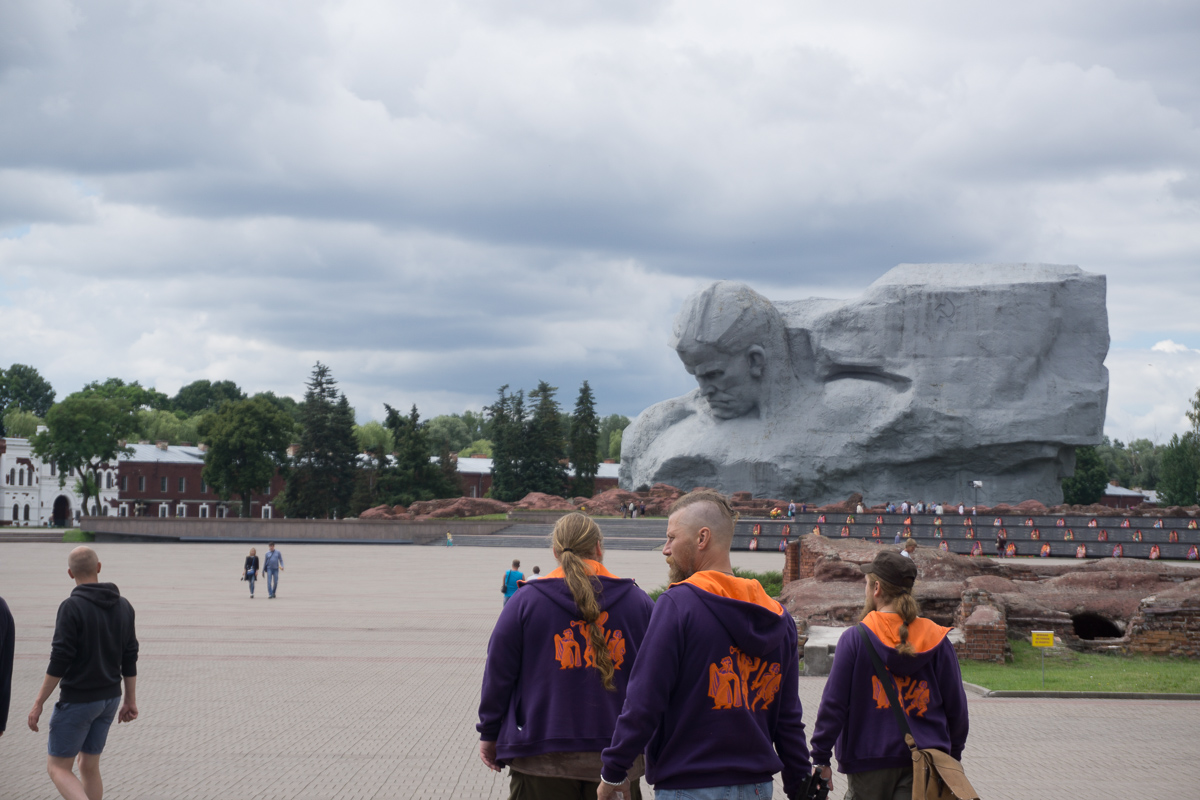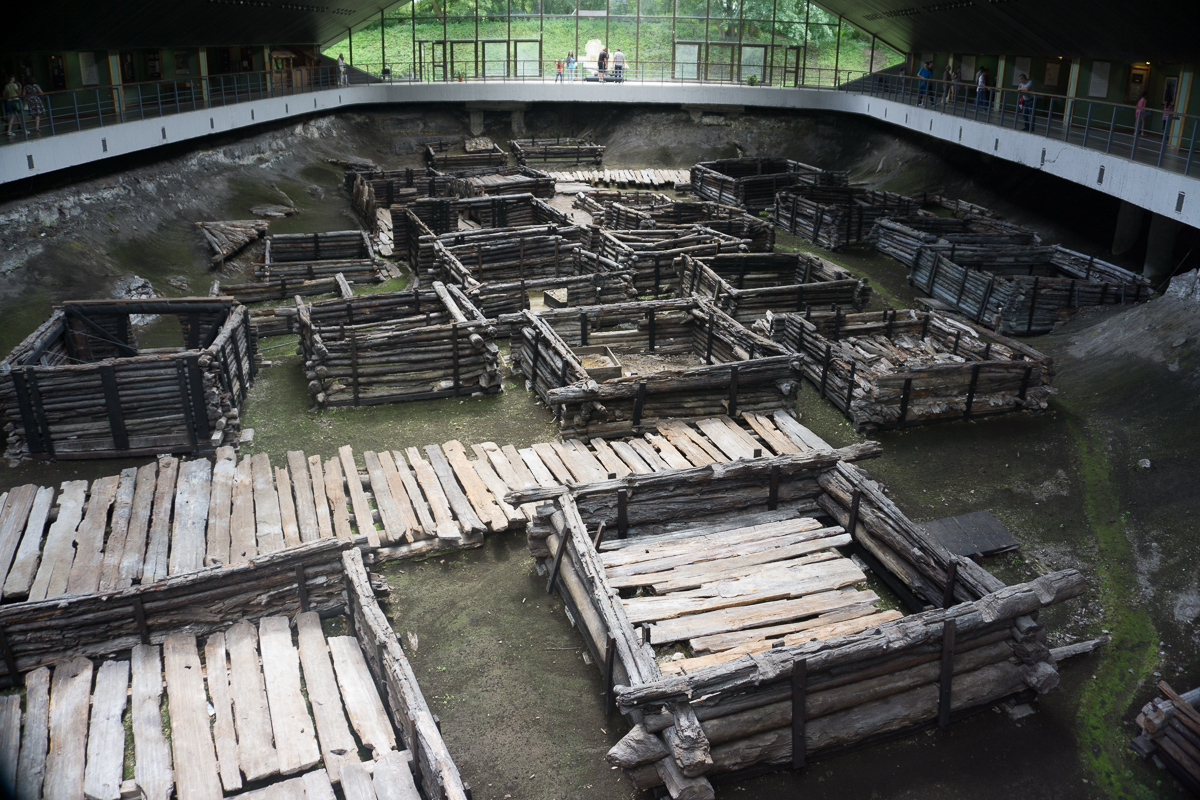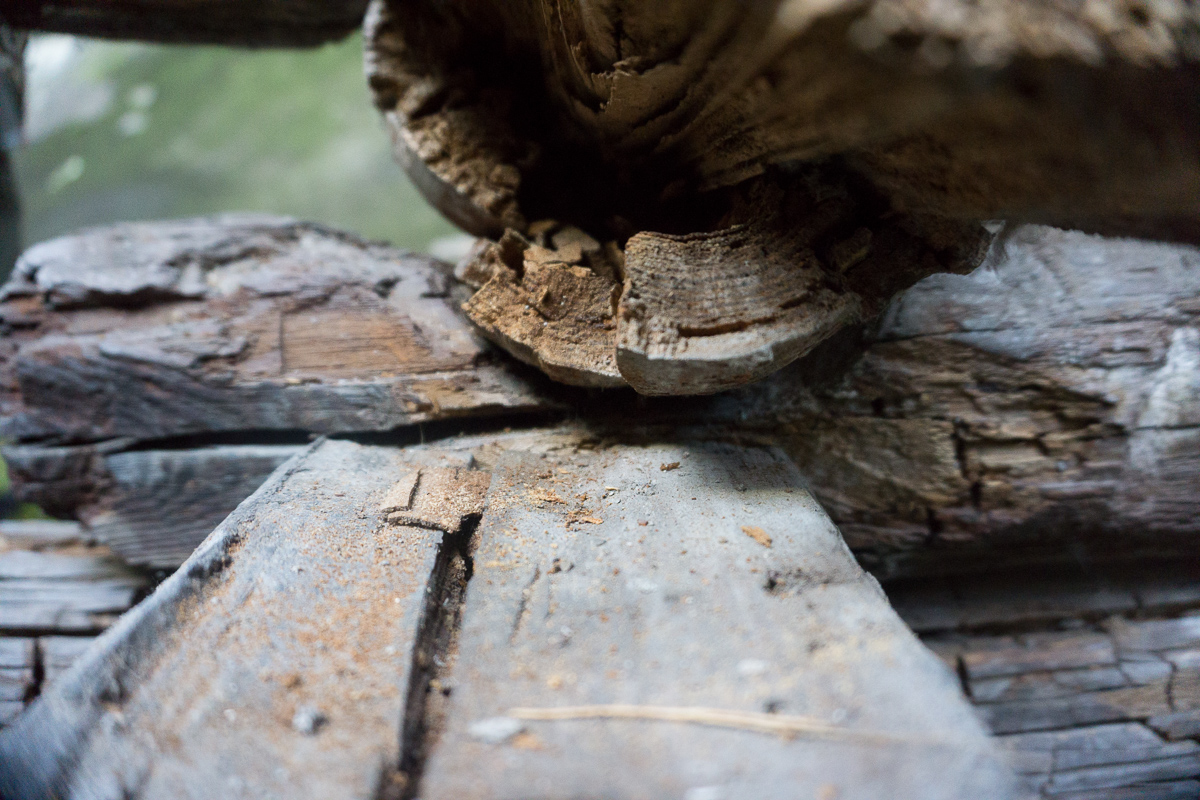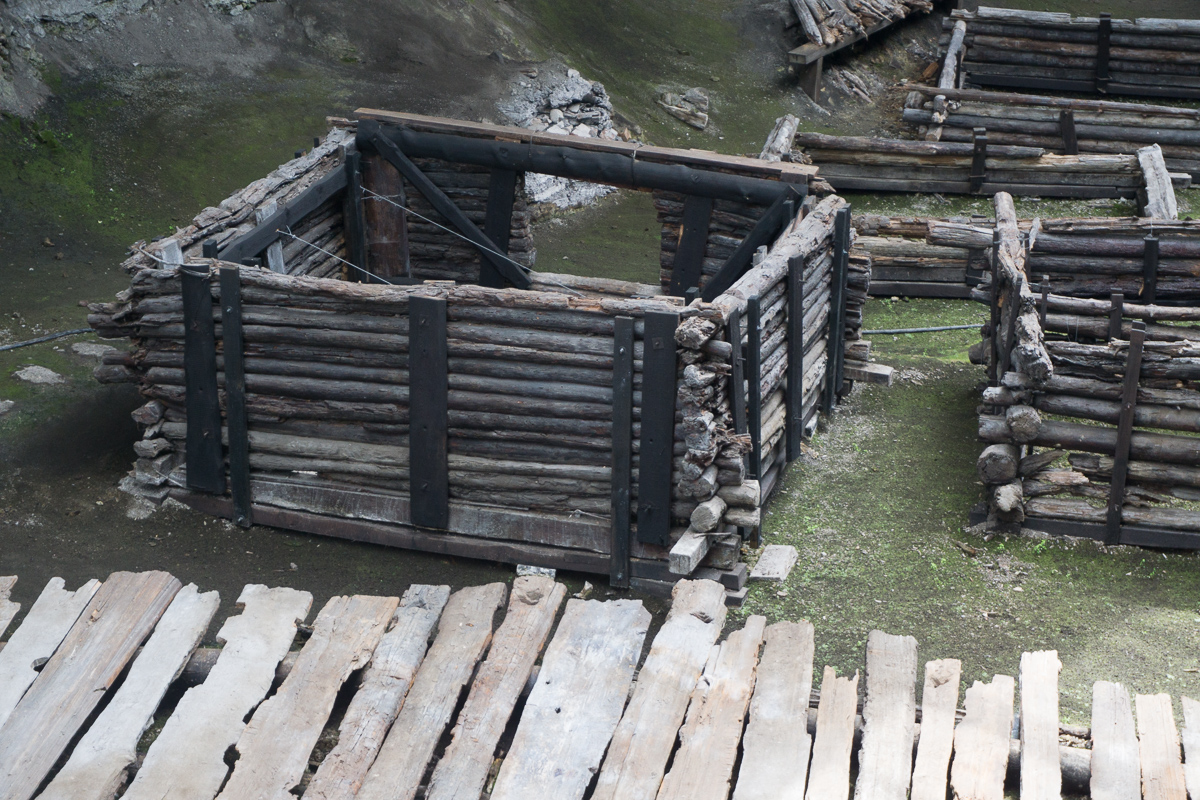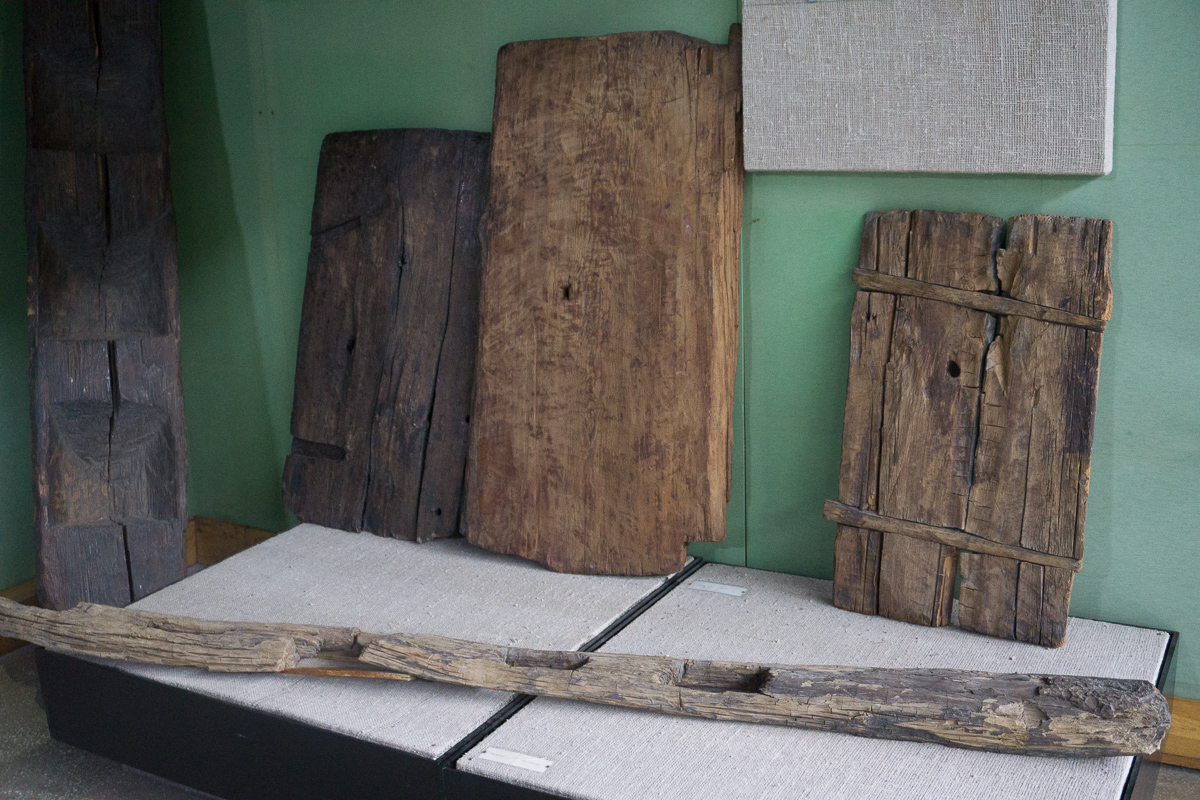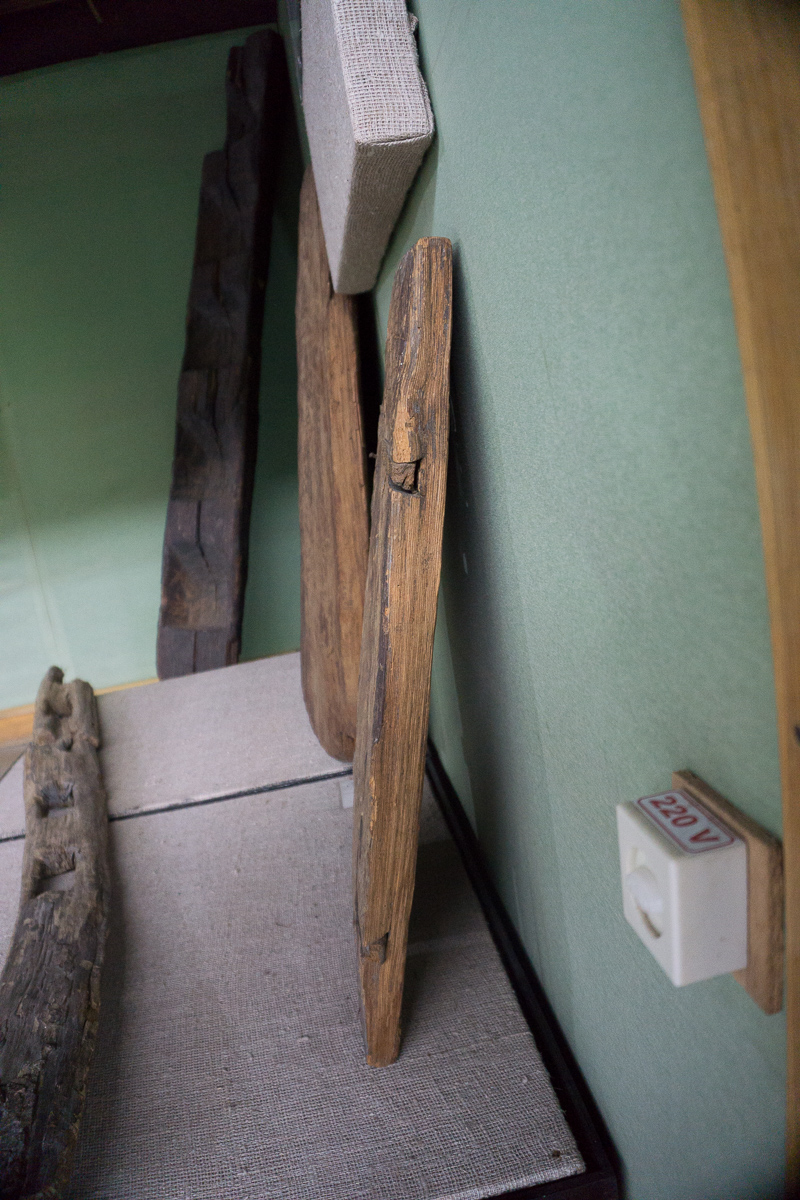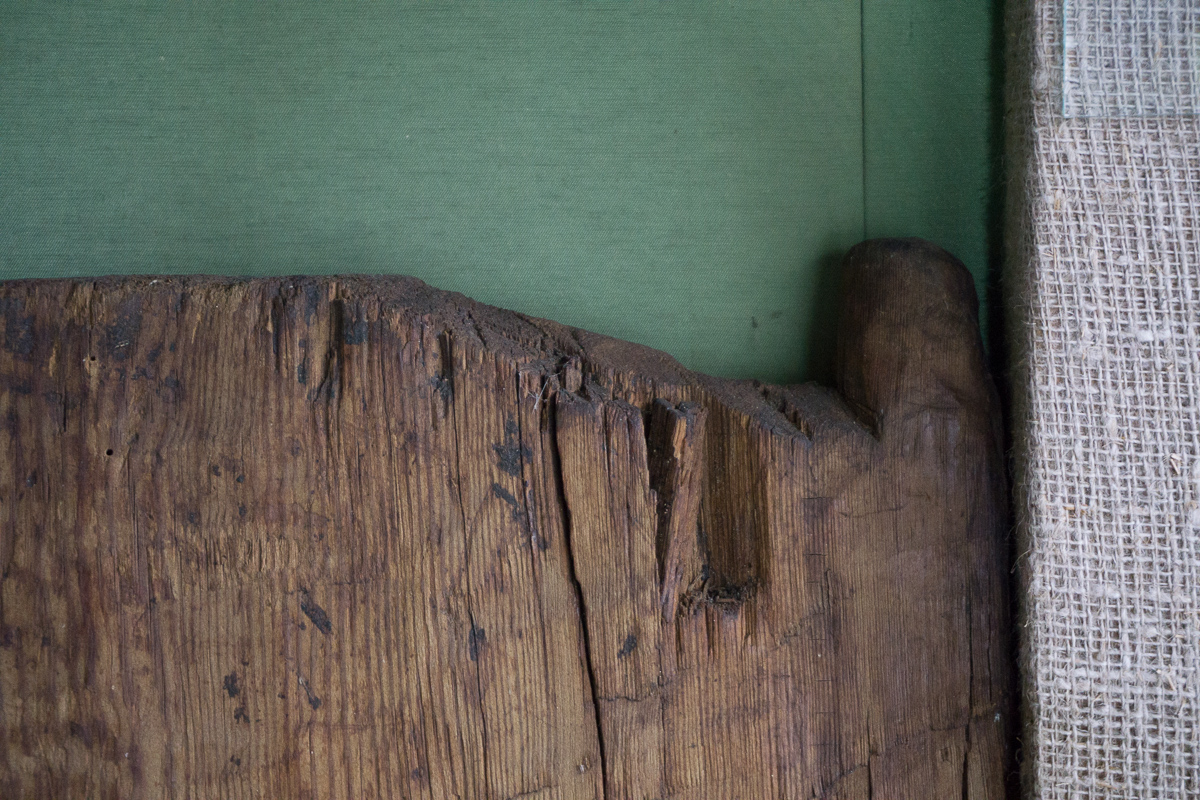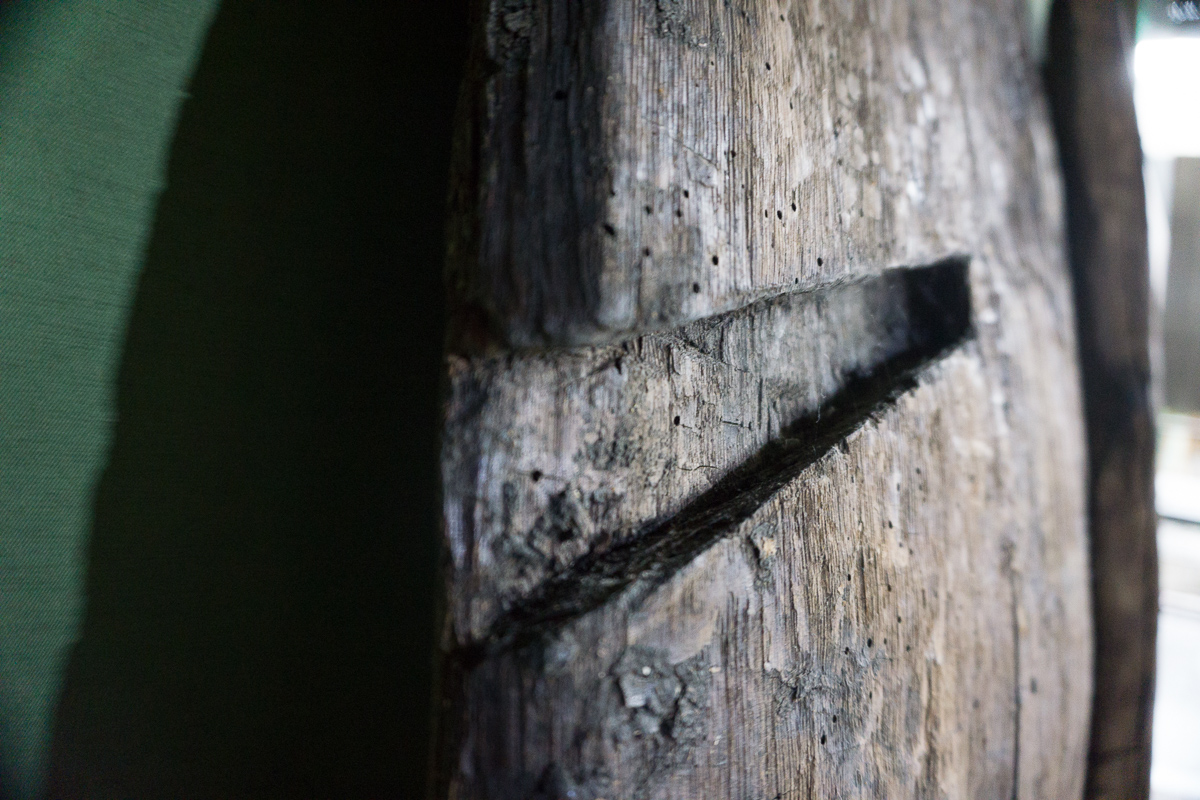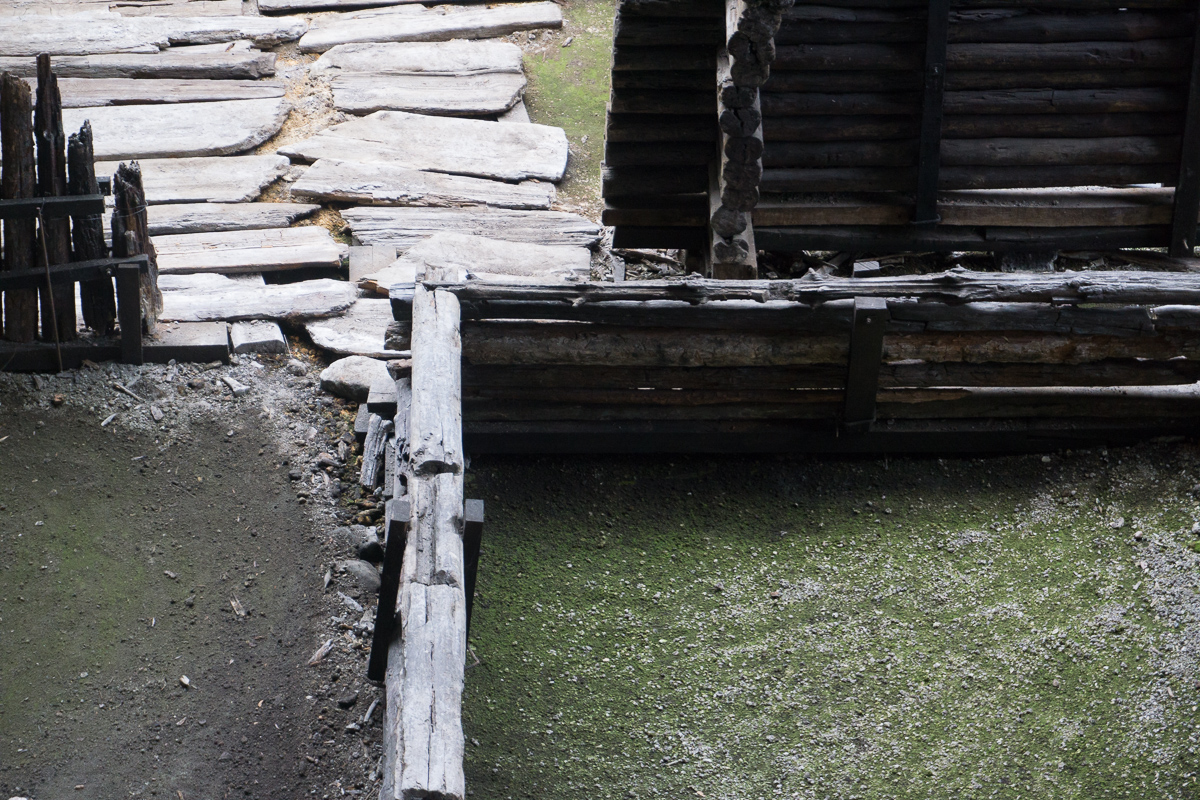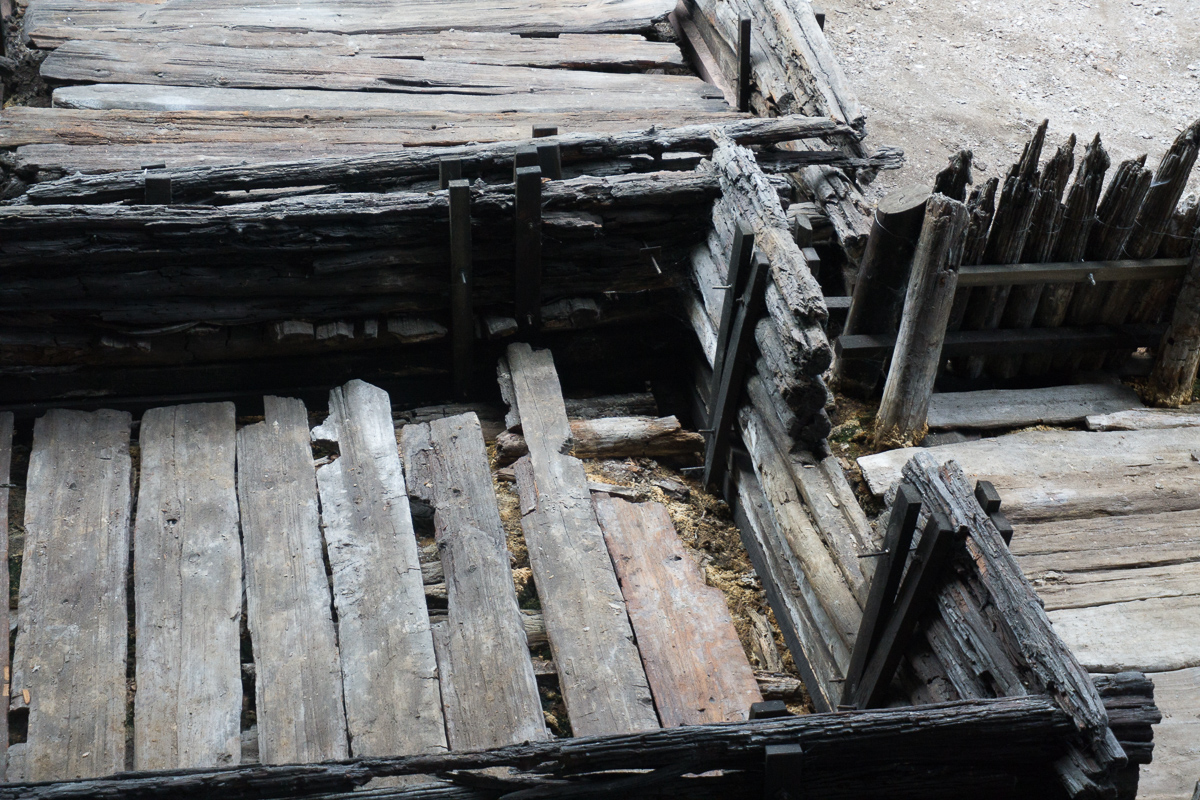Since the activity of our team is associated with the reconstruction of ancient Russian dwellings, we need to know technical aspects of log constructions of that period. How to cut out this or that element, what shape it had, which tool they used for cutting, what gaps between logs were allowed etc.
Unfortunately, descriptions of finds of buildings in scientific publications are not enough detailed. They give only linear size, approximate diameters of logs and orientation. For good reconstruction it’s not enough, we need to see the original. So we went to the «Berestye» museum in Brest.
